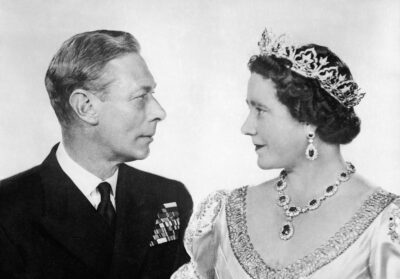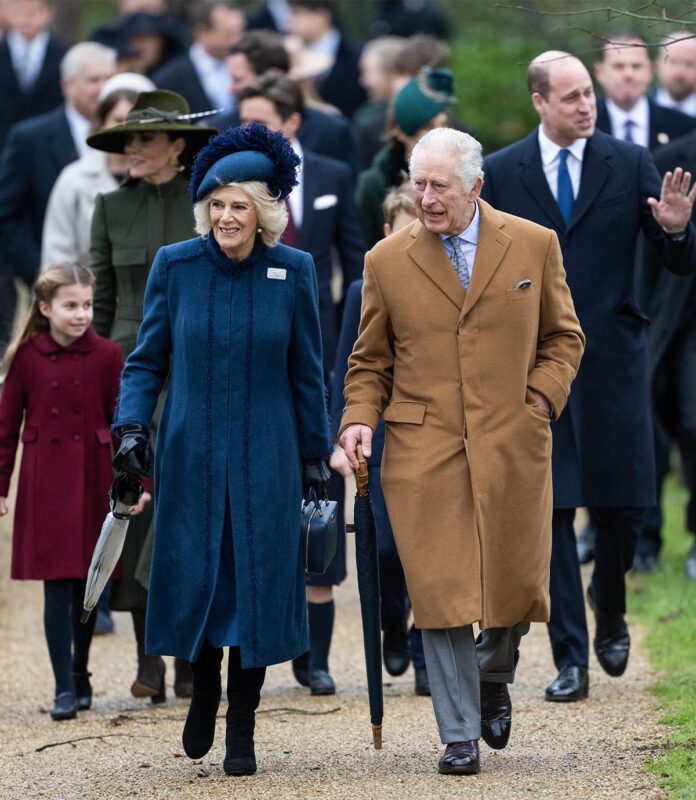
Royalty
The New Royal Court:
A Primer
New King Charles III has vowed to shake up the monarchy. But do you understand how the institution really works? Here, a guide from Hugo Vickers, one of the world's leading authorities on the Royal Family.
Charles Philip Arthur George is already officially the King of the United Kingdom, and so the coronation is not so much like an inauguration as a religious service, representing the blessing of the Church of England. But this day, Saturday, May 6th, is so much more. King Charles faces the daunting task of restructuring an institution whose predecessor was in place for 70 years. The question of what will change at Court, and how, remains to be seen. But, here is a snapshot of the inner workings of the Royal Household and who actually calls the shots.
While the United Kingdom isn’t quite the empire it once was, it still takes a lot of woman and man power to rule Britannia. On the royal side, that means an army of over 500 staffers. Charles III is the head of his court, as was the late Queen. Theoretically, he is consulted and—we assume—deferred to; at the very least his wishes are anticipated and acted upon. In reality, the cards are held by the Royal Household—or Households. There are lots of royals and lots of houses. The main household consists of the Private Secretary’s Office, the Privy Purse and Treasurer’s Office, the Master of the Household’s Department, the Lord Chamberlain’s Office, and the Royal Collection Trust.
Although, in theory, the Lord Chamberlain is the senior courtier, the Private Secretary really runs the show. He is the equivalent to the Chief of Staff in the United States—the gatekeeper who controls access to the Monarch. (Sir Edward Young served the late Queen for nearly 20 years, the last five as Private Secretary; contrast that with Trump who ran through four Chiefs of Staff in four years; Biden is on his second after two.) Currently, the King is being advised by his Private Secretary, Sir Clive Alderton, together with Sir Edward who, as is traditional, is staying on until after the coronation to help with the handover.
The role includes overseeing the monarch’s program of engagements and important correspondence, liaising with key figures in national life, and working with the Prime Minister’s closest advisor.
Yet all the sovereign’s public actions and speeches are guided by the Prime Minister. Hence, for example, in her brief tenure of office, Liz Truss advised the new King not to attend Cop27 (the United Nations Climate Change Conference) and so he did not go. It is the PM, not the monarch, who decides who will pay a state visit to the UK, which explains why, over the years, the Queen was obliged to entertain disagreeable heads of state such as President Mobutu of Zaire in 1973 and President Ceaușescu of Romania in 1978.
Moreover, the Private Secretary must, in a sense, be the carrot and the stick when getting officials to behave as a monarch requires. When, in the 1960s, Labour Lord President of the Council Richard Crossman told Sir Michael Adeane (Queen Elizabeth’s Private Secretary for 19 years) he had no wish to attend the State Opening of Parliament, Adeane slyly told him that was fine, saying all he had to do was to write to the Queen and tell her he would not be there. He added: “Of course, the Queen has as strong a dislike of public ceremonies as you do. I don’t disguise from you the fact that it will certainly occur to her to ask herself why you should be excused when she has to go, since you’re both officials.” Crossman attended, of course; having been shamed into what he considered to be drudgery in the nicest possible way.
Private Secretaries also have an important role as speechwriters. Sir Martin Charteris was known for being remarkably clever in this arena. At a Guildhall luncheon celebrating the Queen’s silver wedding in 1972, she said, “When the bishop was asked what he thought about sin, he replied with simple conviction that he was against it. If I am asked today what I think about family life after 25 years of marriage, I can answer with equal simplicity and conviction. I am for it.” Sometimes Sir Martin could be seen in the background slapping his knee and laughing as the Queen delivered a line he himself had written.
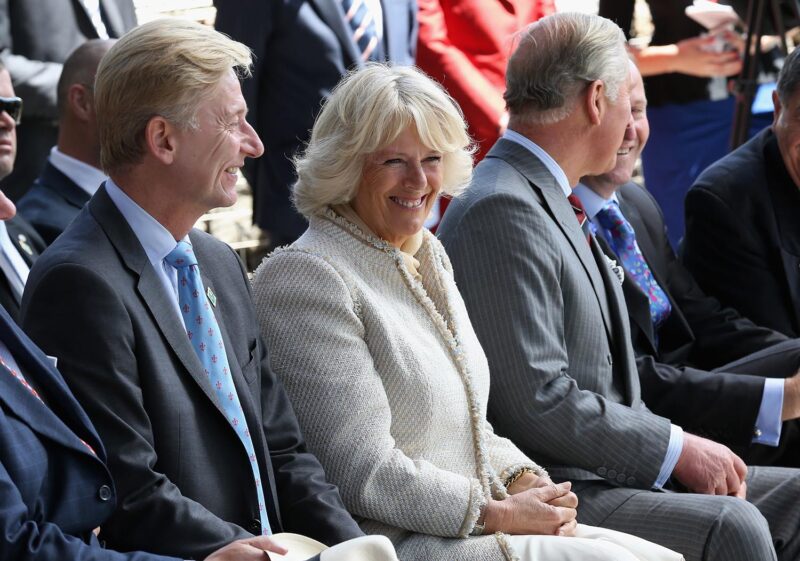
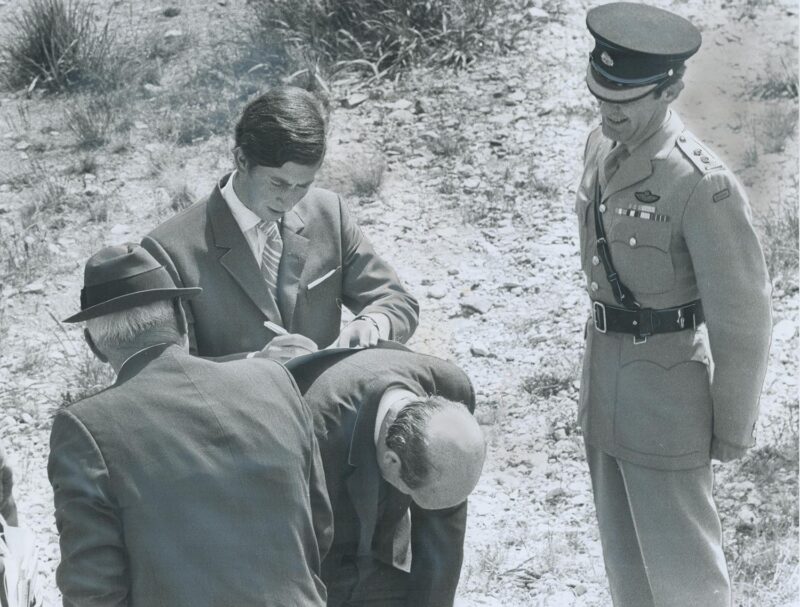
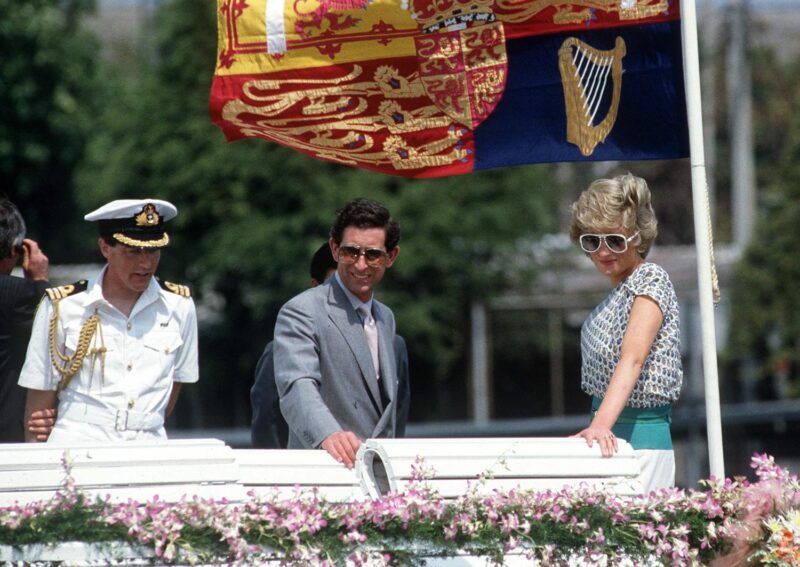
The Privy Purse and Treasurer’s Department are, essentially, Keepers of the Wallet. The Household receives an annual Sovereign Grant from the Treasury—currently £86.3m (over $100 million US)—to fund its activities, and it is the responsibility of this department to manage how those pounds are spent. The Keeper of the Privy Purse is a man of influence since he must make sure the Royal Household runs efficiently. Perhaps the most pro-active—some might say ruthless—Keeper was Sir Michael Peat, who, during his tenure as Keeper of the Privy Purse and Treasurer to the Queen, examined every aspect of the royal finances, and generally streamlined the Household. It was said that where a job was done by three people, he made the same be done by two. So consider the Keeper the McKinsey Consultants of the Royal structure: unpopular and unwanted, but sometimes very much needed.
The Lord Chamberlain’s Department handles events such as royal weddings and funerals, state visits, investitures, and garden parties. One might argue that the experts in public protocol, the protectors of pomp and circumstance, are critical in making the Royal Family what it is; they are, in effect, the institution in charge of branding. They need to be alert to diplomatic matters—and recently their placing of European monarchs behind the British Royal Family at Prince Philip’s memorial service and President Biden likewise out of view at the Queen’s state funeral certainly raised some eyebrows.
The Master of the Household is chief of all the domestic staff—housekeepers, chefs, upholsterers, footmen, porters and pages, through to the superintendents of Windsor Castle and other royal residences. The Master’s purview extends to The Royal Mews, which deals with royal transport, cars (there is a vast fleet of state cars), horses, and carriages (again a great number, ranging from the Gold State Coach to barouches and Ascot landaus). They are featured in processions and events such as the Birthday Parade (Trooping the Colour)—overseen by the Crown Equerry, and at ceremonial level by the Master of the Horse.
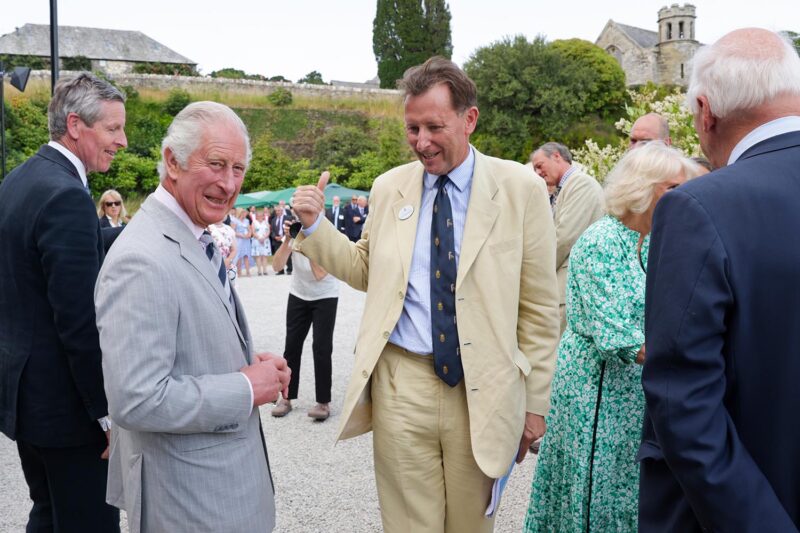
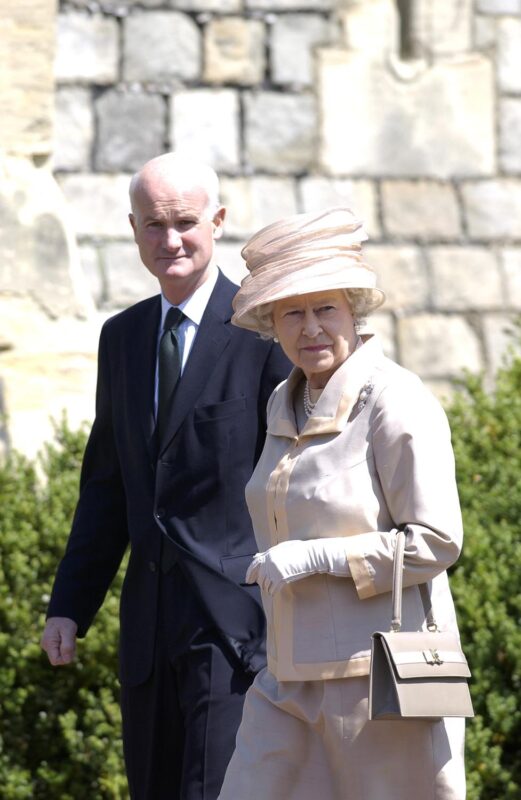
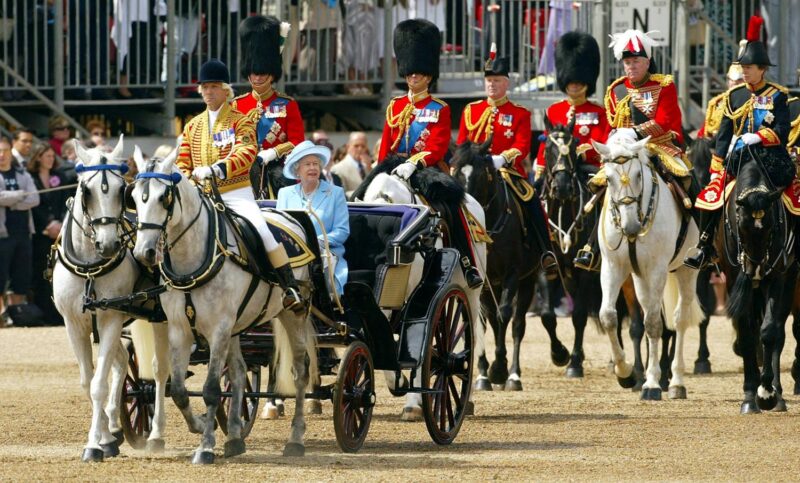
Individual royals have their own households, with their own power bases. The Queen Mother had her own court based at Clarence House. During Queen Elizabeth’s reign her husband, the Duke of Edinburgh, had his own household—and so does Camilla, the Queen Consort, now that Charles has succeeded to the throne.
These households varied enormously in their order and style, reflective of the style and way of operating of the member of the Royal Family. When in operation, the Duke of Edinburgh’s office, for example, was a highly efficient organisation. Once, when appointing a new Private Secretary, Prince Philip wrote to him aware that he might be concerned that there were “stuffed shirts” at the Palace. “I expect all sorts of visions of court life and behaviour are looming up. Forget them. The people who matter in the organisation are perfectly normal, decent human beings with whom you would not have the slightest difficulty. Naturally there are one or two stiffs, but you get them in every racket, as you know… You must appreciate that the Queen’s household is an entirely separate organisation.”
He went on to say he employed a head of household, a private secretary, a service equerry, two extra equerries for when they were required, a chief clerk, five female typists, a policeman and a driver. “It’s a small party but they are busy and therefore happy.”
The Queen Mother’s household was Edwardian by contrast. Private Secretary Sir Martin Gilliat ran the show in eccentric style. There were frequent breaks for tea and alcohol. Gilliat once saved a rather tricky occasion by reminding the King of Siam that he knew he could stand on his head. The King obliged and after that the party went swimmingly.
In New Zealand, when the Queen Mother boarded a train, he announced: “Now we must get out the automatic arm.” The Lady in Waiting on the tour, new to the household, was astonished. “Well,” he said, “you can’t expect the Queen Mother to wave the entire time, so we have this arm.” She believed him. (And in fact, when one thinks about it, this would be a highly useful device to this day.)
Sir Martin’s counterpart at Clarence House was the Treasurer, Sir Ralph Anstruther, a stickler for decorum and tradition, who frequently berated young equerries for sartorial failures and reported them for bad behavior. He demanded that those in attendance on the Queen Mother for visits to places like Smithfield Market wear a bowler hat and carry a furled umbrella. He himself wore a stiff collar whenever the court was in London—even if he wasn’t going out.
Both the Queen and the Queen Mother had long serving ladies-in-waiting, one of whom was always in attendance. Some of these were personal friends; they were all ladies from a particular class. They were “wingwomen,” on hand at public engagements, alert to any need the Queen or Queen Mother might have. They also dealt with correspondence from the general public. If, for example, the Queen Mother got an unwanted letter from someone, she might be tempted to write: “Him again!” on a letter. A lady-in-waiting would translate that sentiment to: “Her Majesty was grateful to receive your further letter…”
The Queen Mother’s page, William Tallon, was there from the moment she appeared in the morning until the minute she retired at night. He saw his role as to keep her smiling and put guests at their ease. He was also a wizard with a drink. Of him it was said, “No use putting your hand over your glass, he pours it through the fingers.” He knew the Queen Mother for over 50 years, and they talked of many things, yet never once did he sit down in her presence. He had his own court rules. The Ladies in Waiting got tea and cakes, the lady clerks only tea.
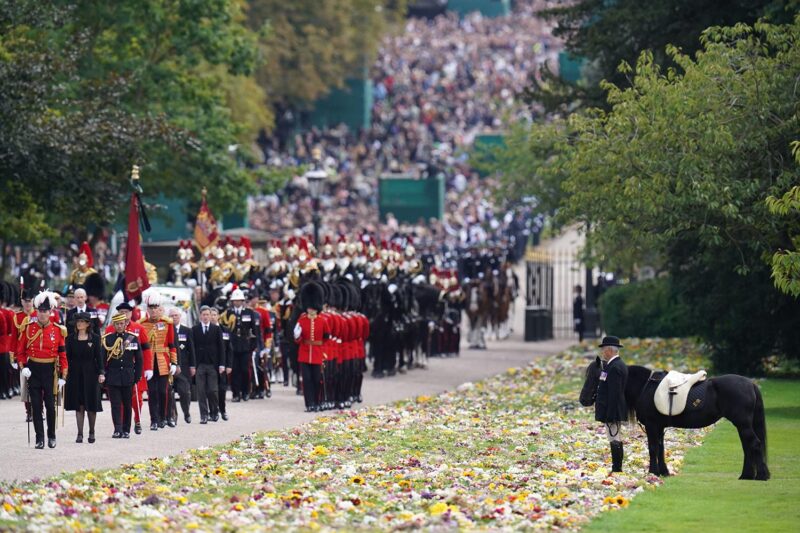
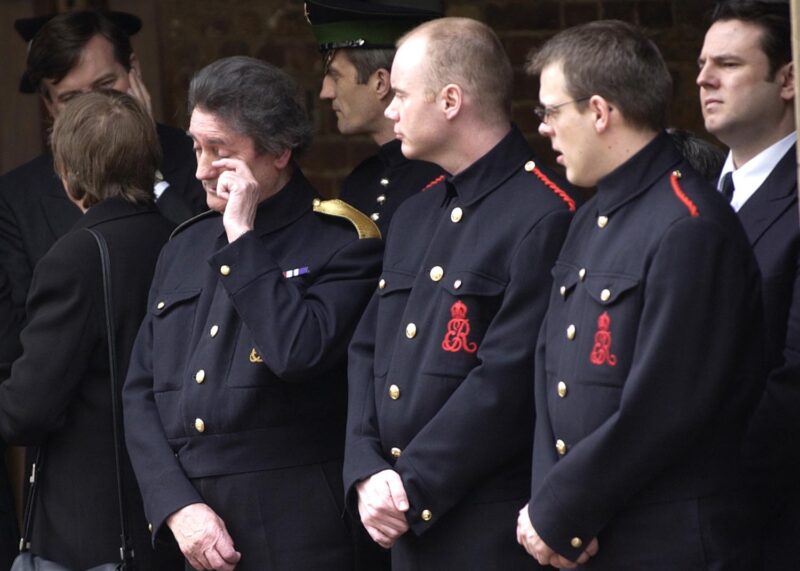
As Prince of Wales, Charles’s office often conflicted with his mother’s household. He employed figures such as Commander Richard Aylard and Mark Bolland, who were active in the media, spinning in what they considered his best interests, sometimes against other members of the family. Bolland was particularly effective in manoeuvring the public image of Camilla Parker Bowles from one of hated mistress to supportive wife.
Other members of the Royal Family—Princess Anne, Prince Edward, the Duke of Gloucester, the Duke of Kent, Princess Alexandra, and Prince Michael—have their own staff, but these defer to Buckingham Palace.
As of the writing of this article, the structure of the various royal households is still very much in flux. Most members of the Royal Family have their own Households/power centers at various homes and estates (though Prince Andrew has lost his at Buckingham Palace.)
King Charles is known to want to streamline the monarchy and informalize the throne. For example, he will almost certainly not make Buckingham Palace his home, preferring Clarence House (and helped by the Palace undergoing extensive restoration). As he settles into his new role as sovereign, it remains to be seen just how much that shake up may alter what has been a tradition for hundreds of years. Will royal insiders be rattled, or entirely unfazed? We will see what happens to those amongst the courtiers who have what is commonly known as “red carpet fever”—the tendency to take the dealings of the Royal Family just a little too seriously.
Hero image: The King and Queen Consort attend the Christmas Day service at Sandringham Church on December 25, 2022 with other members of the royal family. Photo by Samir Hussein via Getty Images


